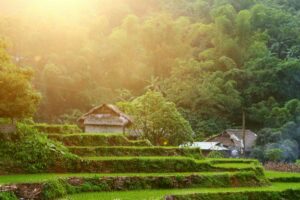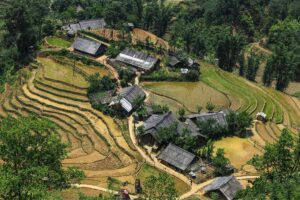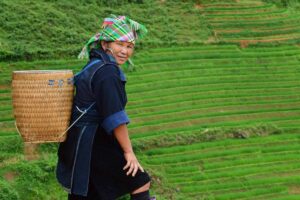Hoang Lien National Park, home to the iconic Fansipan peak, is a sprawling natural wonderland near the mountain town of Sapa. Established in 2006, this park encompasses a vast area of diverse landscapes, rare flora and fauna, and vibrant ethnic communities. It’s a paradise for nature enthusiasts and adventurers alike.pen_spark
Hoang Lien National Park
Size & location
Established by the Vietnamese government in 2006, Hoang Lien National Park spans 68,569 hectares (264.75 sq mi) in Lao Cai Province, covering the districts of Sa Pa and Than Uyen. It lies close to the famous mountain town of Sapa, which serves as the main gateway to the park.
Mountain range
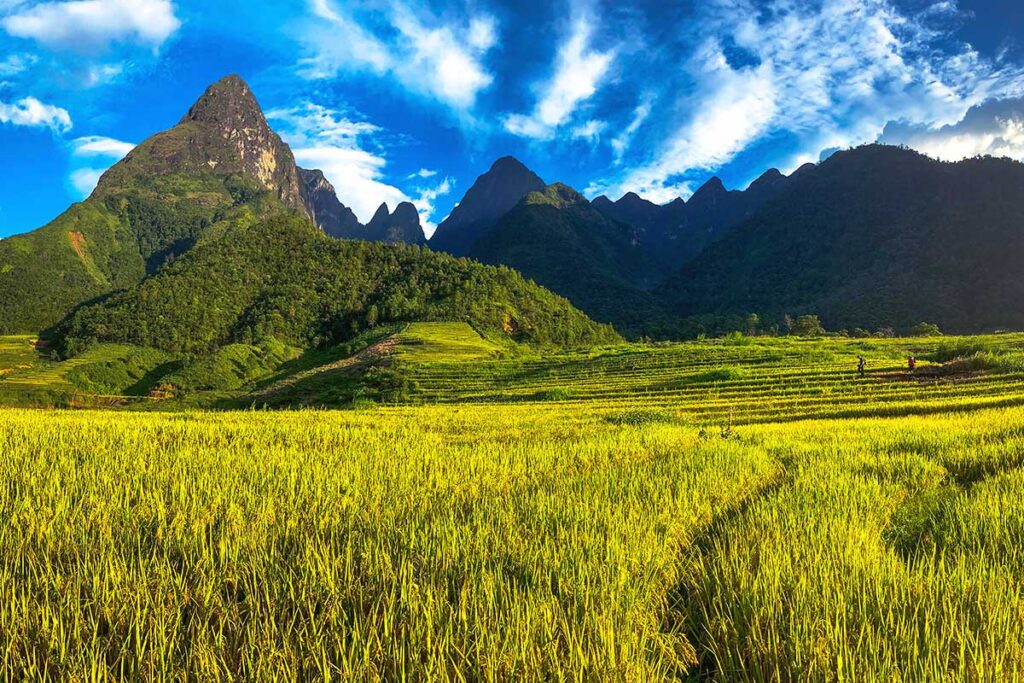
The park is part of the Hoang Lien Son mountain range, characterized by rugged terrain that ranges from 1,000 to 3,000 meters in elevation. The highest peak in the park, and in Vietnam, is Fansipan, which stands at 3,143 meters.
Flora and fauna
Hoang Lien National Park is a biodiversity hotspot, with over 3,000 plant species, many of which are endemic and endangered. Approximately 25 percent of Vietnam’s endemic plants are found on Fansipan Mountain. The park is also home to a diverse array of wildlife, including 199 species of butterflies and numerous globally endangered animals and birds. In 1999, 347 bird species were recorded in and around the nature reserve, including 49 species restricted to North-west Tonkin. However, the population of mammals in the park is low due to poaching.
Ethnic people
Six ethnic groups live in and around Hoang Lien National Park, with the Dao and H’mong people being the majority. These communities have lived here for generations, maintaining traditional lifestyles that are closely connected to the natural environment. They engage in farming, crafting, and cultural activities, contributing to the rich cultural tapestry of the region.
How to get there
1. Sapa – the gateway to Hoang Lien National Park
Sapa is the most well-known town for accessing Hoang Lien National Park. Here’s how you can get to Sapa from Hanoi:
- Sleeper train to Lao Cai: Take a comfortable overnight train from Hanoi to Lao Cai, followed by a short taxi ride to Sapa.
- Limousine buses: Several companies offer daytime limousine bus services from Hanoi to Sapa, providing a more convenient option for those who prefer to travel during the day.
- Sleeper buses: While sleeper buses are available, they are not recommended due to their cramped conditions and potential safety concerns.
For more detailed information, refer to our full guide on how to get from Hanoi to Sapa.
2. From Sapa to Hoang Lien National Park
The easiest way to visit Hoang Lien National Park from Sapa is by heading to Fansipan Mountain. You can take the train and cable car to reach the peak. Alternatively, guided trekking tours are available for those looking to explore the park more intimately. Due to the mountainous terrain, the park is not easily accessible by yourself, and there are no roads that go straight through the national park.
Highlights of Hoang Lien National Park
1. Trekking in Muong Hoa Valley
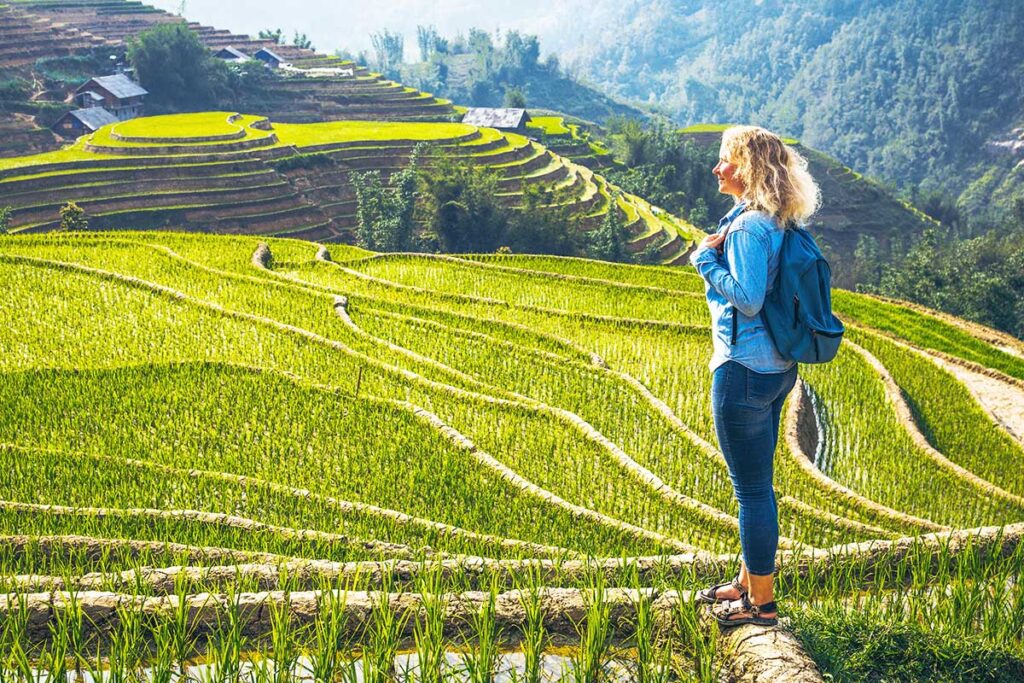
While the Muong Hoa Valley is mostly outside Hoang Lien National Park, its proximity to the park offers stunning views of the mountains within. Trekking through the Muong Hoa Valley provides spectacular scenery, including terraced rice fields, flowing streams, ethnic villages, bamboo forests, and mountain vistas. Treks range from short day hikes to multi-day adventures that include overnight stays in ethnic homestays, allowing you to immerse yourself in the local culture and natural beauty.
2. Fansipan cable car
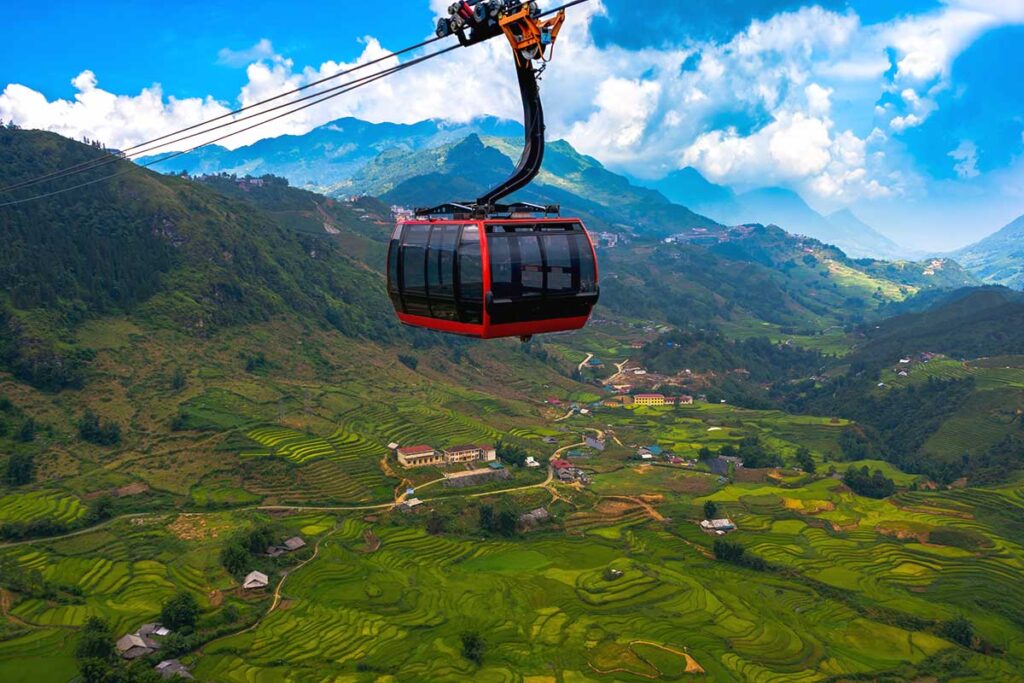
The easiest way to delve into Hoang Lien National Park is by taking the cable car to the summit of Fansipan. Start your journey with a scenic short train ride from Sapa town to the cable car station. The cable car ride itself offers breathtaking views of the mountains. Once at the top, explore the area around a large square, taking in the stunning landscapes. On clear days, the views are spectacular, although Fansipan is often shrouded in clouds. To reach the summit, you can either walk up the stairs or take the funicular train for the final ascent.
3. Fansipan trekking
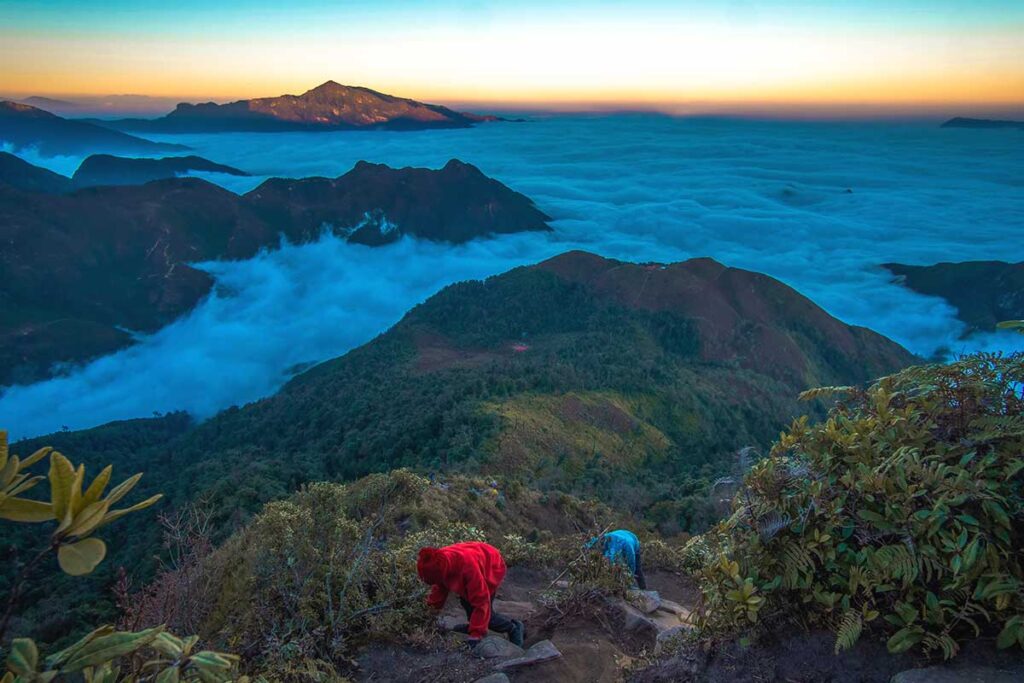
Trekking to the summit of Fansipan is undoubtedly the best way to explore Hoang Lien National Park. This trek takes you through the heart of the park, offering an immersive experience of its diverse landscapes. The trek starts near the Love Waterfall at Tram Ton Pass and always requires a guide. On the way, you’ll see lush forests, unique flora, and possibly some wildlife. There are several trekking options:
- 1-Day Trek: Only for the very fit, starting early in the morning.
- 2-Day Trek: Includes camping near the summit.
- 3-Day Trek: A more relaxed pace with additional time to explore.
5. Tram Ton Pass

Tram Ton Pass, the highest mountain pass in Vietnam, crosses the borders of Hoang Lien National Park. It offers stunning views of the Hoang Lien Son mountain range, with several viewpoints along the way. The pass is a highlight for anyone visiting the park, providing breathtaking scenery and photo opportunities.
6. Scenic road around the national park
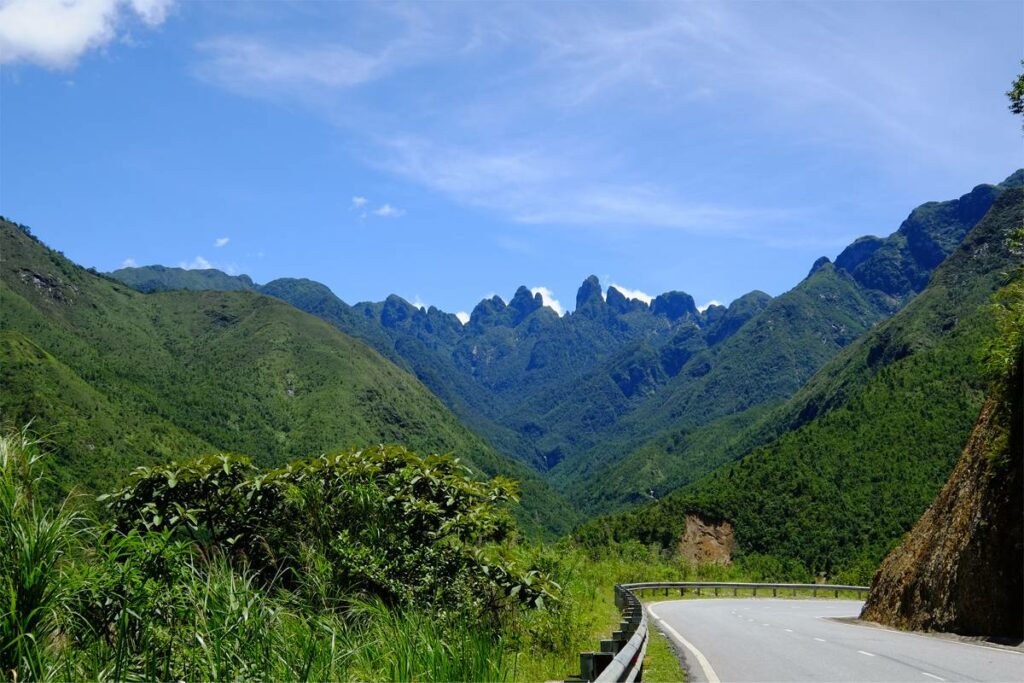
Beyond Tram Ton Pass, a scenic road winds around the park’s perimeter, offering an off-the-beaten-path adventure. While few travelers venture this far, the journey rewards with hidden waterfalls, charming villages, terraced rice fields, and breathtaking viewpoints. It’s a fantastic way to experience the park’s diverse landscapes at your own pace. While it’s possible to drive around the park in one day, it’s best to take your time to fully appreciate the diverse landscapes and cultural experiences along the way.
7. Waterfalls
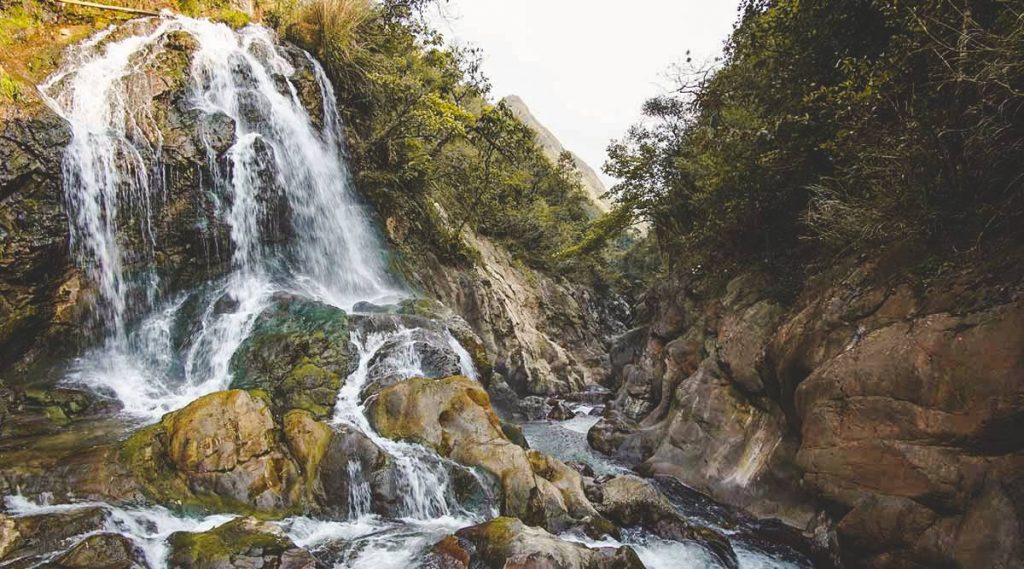
Hoang Lien National Park is home to numerous stunning waterfalls, especially during the rainy season in summer. In the dry season, only a few waterfalls flow, but in the rainy season, they become spectacular and can be found throughout the mountains. Some waterfalls flow into the Muong Hoa Valley, creating natural pools perfect for a refreshing swim after a hot day of trekking.
8. Wildlife spotting
Spotting wildlife in Hoang Lien National Park can be challenging due to poaching and the shy nature of larger mammals. However, bird watching is more rewarding, with many species present in the park. You might also see reptiles such as snakes and lizards. While a short visit may not guarantee wildlife sightings, the park’s rich biodiversity still offers plenty to appreciate.
Best time to visit Hoang Lien National Park
Most Stunning Scenery
The most visually stunning time to visit Hoang Lien National Park is during the summer months (June to August). During this time, the landscape is lush and green, rice fields are growing, and waterfalls are at their most impressive. However, be prepared for rain, which can make treks muddy and increase the risk of landslides in off-the-beaten-path areas.
Best Weather
The best weather for visiting the park is from March to May and September to November. These months avoid the summer heat and heavy rains, as well as the cold and foggy winter months. The weather during these periods is ideal for trekking and exploring, with moderate temperatures and minimal rainfall.
